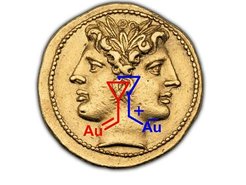π-Acid Catalysis

Catalytic activation of π-systems with the aid of carbophilic Lewis acids such as Pt(2+) and Au(1+) has gained considerable momentum only after the turn of the millennium. Except for a few pioneering studies, this field was virtually inexistent until the late 1990’s but is currently one of the most rapidly growing areas of homogeneous catalysis.
As early as 1998, the Fürstner group proposed a unifying mechanism that is now widely accepted and has become textbook knowledge. The underlying “carbene/carbocation” hypothesis guided our investigations and led to the discovery of several new reactions, which were successfully implemented into natural product total synthesis. In addition to skeletal rearrangement and cyclopropanation reactions, a broadly applicable benzannulation and a new approach to pyrones and related heterocycles deserve particular mentioning. Asymmetric gold catalysis has also be explored.
Moreover, we are dedicated to the characterization of pertinent reactive intermediates in order to refine the mechanistic understanding. Most notable is the first crystallographic characterization of a reactive gold carbene: based on these data, the debate on structure and bonding in such catalytically relevant intermediates has been decided. In addition, it was shown how a rather unusual gem-diauration reaction can impact on gold catalysis.
Additional information can be found in the following presentation.
